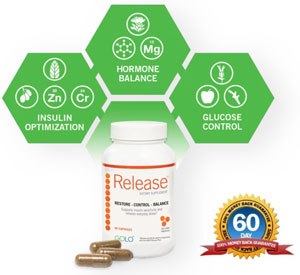Fitness
How do I incorporate rest days into my fitness plan?
Published
2 years agoon
By
mbkteam
In your quest for peak physical fitness, it's easy to overlook the significance of rest days. The allure of achieving more, pushing boundaries, and setting new personal records can often overshadow the essential need for recuperation. However, it's crucial to understand that rest days are not only beneficial but are a fundamental component of an effective training program. This article delves into why rest days are indispensable, how they contribute to your fitness goals, and what activities you can engage in during these periods to maximize their benefits.
Understanding the Role of Rest Days
Rest days are vital for muscle recovery, mental rejuvenation, and overall well-being. When you engage in any physical activity, especially high-intensity workouts, your muscles undergo stress, which leads to the formation of micro-tears in muscle fibers. This damage, albeit controlled, is necessary for muscle growth. When you rest, your body repairs and rebuilds these fibers, making them stronger—a process known as hypertrophy. If adequate rest is not incorporated, your muscles can't heal properly, leading to potential overuse injuries and a plateau in performance.
Additionally, consistent intense workouts elevate cortisol levels, a hormone linked to stress. High cortisol levels can disrupt hormonal balance, impairing recovery and increasing the likelihood of injuries. Providing your body with a rest day allows cortisol levels to normalize, promoting better physical and mental health.
Furthermore, rest days are instrumental in preventing burnout. Mental fatigue from ongoing, strenuous exercise routines can diminish motivation and even lead to anxiety or depression. By scheduling regular rest days, you give your mind a break, which can enhance your enthusiasm and focus when you return to your workouts.
Signs That You Need a Rest Day
It's essential to listen to your body and recognize when it’s signaling the need for a break. Key indicators that you may need a rest day include persistent muscle soreness, extreme fatigue, pain that doesn't subside, emotional changes, sleeping issues, and reduced performance. These signs suggest that your body hasn’t fully recovered from previous workouts and that continuing without rest could be detrimental.
Persistent muscle soreness indicates that your muscles haven’t had sufficient time to repair, while extreme fatigue can signal overall exhaustion. Pain, especially in muscles or joints, might point to an overuse injury—a clear indication that you need to take a break. Emotional changes, like irritability and mood swings, often accompany physical burnout due to hormonal imbalances triggered by overtraining. Moreover, difficulties in sleeping can arise from elevated levels of cortisol and adrenaline, further stressing the importance of rest for a quality night's sleep. Reduced performance, where your usual routine feels more challenging, also underscores the need for a rest day to restore optimal function.
Psychological Benefits of Rest Days
Beyond physical recuperation, rest days play a crucial role in mental health. The constant drive to achieve more can sometimes lead to exercise guilt, where one feels anxious or guilty about taking time off. Recognizing that rest is a valid and necessary component of fitness can help mitigate these feelings.
Taking rest days helps balance your mood and restore emotional stability. When you’re physically exhausted, your mental clarity also suffers, leading to decreased concentration and heightened stress levels. Incorporating rest days into your routine fosters a healthier relationship with exercise and can improve your overall quality of life.
How Rest Days Affect Your Fitness Goals
Contrary to popular belief, rest days do not hinder your progress; they enhance it. Strength, power, speed, and muscle mass actually increase during periods of rest. Known as specific adaptations to imposed demands (SAID), this principle highlights that your body needs time to adapt to the stress placed upon it during workouts. Without sufficient rest, these adaptations can't occur, and your progress may stall.
Incorporating rest days strategically can lead to more significant improvements in your fitness journey. For example, if you are engaged in strength training, taking one or two rest days per week allows your muscles to recover and grow stronger. Similarly, for those involved in endurance training, rest days help replenish glycogen stores and repair muscle tissue, enhancing overall performance.
What to Do on a Rest Day
Rest days don't necessarily mean inactivity. Engaging in low-impact activities can promote recovery without adding undue stress to your body. Activities such as yoga, light walking, casual swimming, biking, or dancing can keep you moving and maintain your fitness levels.
Yoga and Stretching
Yoga is an excellent choice for rest days. It not only helps stretch and strengthen muscles but also promotes calmness and mental clarity. A short 10 to 15-minute yoga session can be incredibly beneficial for exercise recovery. Engaging in yoga helps alleviate muscle tightness and improves flexibility, preparing your body for the next workout.
Low-Impact Workouts
Low-impact workouts are perfect for staying active without overstressing your body. Walking, casual swimming, and biking are great options that allow you to engage in physical activity in a more relaxed manner. These exercises support cardiovascular health and muscle maintenance while giving your body the needed break from high-intensity workouts.
Meditation and Mindfulness
Mental relaxation is equally important on rest days. Practicing meditation or mindfulness can significantly aid in reducing stress and promoting emotional well-being. These practices help lower cortisol levels and improve your mental state, making you feel more refreshed and focused.
Foam Rolling and Light Stretching
Foam rolling is another beneficial activity for rest days. It helps reduce muscle stiffness and enhances blood flow to the muscles, accelerating the recovery process. Light stretching can also be incorporated to maintain flexibility and prevent muscle imbalances.
Leisure Activities
Rest days are an excellent opportunity to indulge in leisure activities that you enjoy. Whether it's reading a book, spending time with family and friends, or watching a movie, these activities contribute to overall relaxation and well-being.
Nutrition on Rest Days
Your nutritional needs on rest days don't differ significantly from active days, but focusing on foods that support recovery can be beneficial. Consuming adequate protein is crucial for muscle repair. Include complex carbohydrates like fruits, vegetables, and whole grains to replenish glycogen stores. Healthy fats from sources such as avocados, nuts, and seeds provide essential nutrients that support overall health.
Hydration is also vital on rest days. Drinking plenty of water helps flush out toxins and keeps your muscles hydrated, facilitating better recovery. Additionally, consider incorporating anti-inflammatory foods like berries, leafy greens, and turmeric to reduce muscle soreness and support the healing process.
Scheduling Rest Days
The frequency and timing of rest days can vary based on individual fitness levels, types of training, and personal goals. Beginners may benefit from resting every two to three days post-exercise. Intermediate and advanced athletes might require fewer rest days, typically one to two per week, depending on the intensity and duration of their workouts.
It's important to listen to your body and adjust your rest days accordingly. If you feel unusually fatigued or notice any signs of overtraining, it might be time to incorporate an additional rest day.
Rest Days and Long-Term Fitness
Rest days are not just about immediate recovery; they play a significant role in long-term fitness sustainability. Consistently allowing your body to recover reduces the risk of injuries, maintaining your ability to train effectively over time. It also helps avoid workout plateaus, ensuring continuous progress towards your fitness goals.
By incorporating rest days into your routine, you can enjoy a balanced and sustainable approach to fitness. This balance prevents burnout and keeps you motivated to pursue your fitness journey with enthusiasm and resilience.
Expert Recommendations
Fitness experts universally agree on the importance of rest days. Whether you’re a beginner or a seasoned athlete, incorporating rest into your training plan is essential. For instance, Healthline highlights the benefits of low-impact activities like yoga and walking, which can be integrated into rest days to promote recovery without overstressing the body.
Similarly, Fitness Blender emphasizes the psychological benefits of rest days, noting how they prevent exercise guilt and promote overall well-being. The site offers practical tips for managing rest days, such as incorporating gentle stretching or light movements to maintain a healthy balance between activity and rest.
Furthermore, renowned fitness platforms like Sweat provide insights on how to optimize rest days for recovery and relaxation. Their recommendations include activities like foam rolling, which can reduce muscle stiffness, and mindful eating to support muscle repair.
Conclusion
Incorporating rest days into your fitness regimen is not only a necessity but a strategic approach to achieving long-term success. By understanding the profound impact of recovery on muscle growth, mental health, and overall performance, you can create a balanced workout routine that maximizes benefits and minimizes risks.
Rest days should be seen as an integral part of your fitness journey that contributes to the bigger picture of health and well-being. Embrace them as opportunities to rejuvenate your body and mind, and you will find yourself better prepared to tackle your next workout with renewed energy and enthusiasm. Remember, rest is not a sign of weakness but a testament to your commitment to a sustainable and effective fitness lifestyle.













